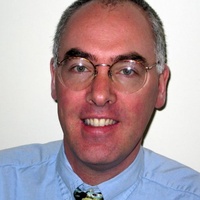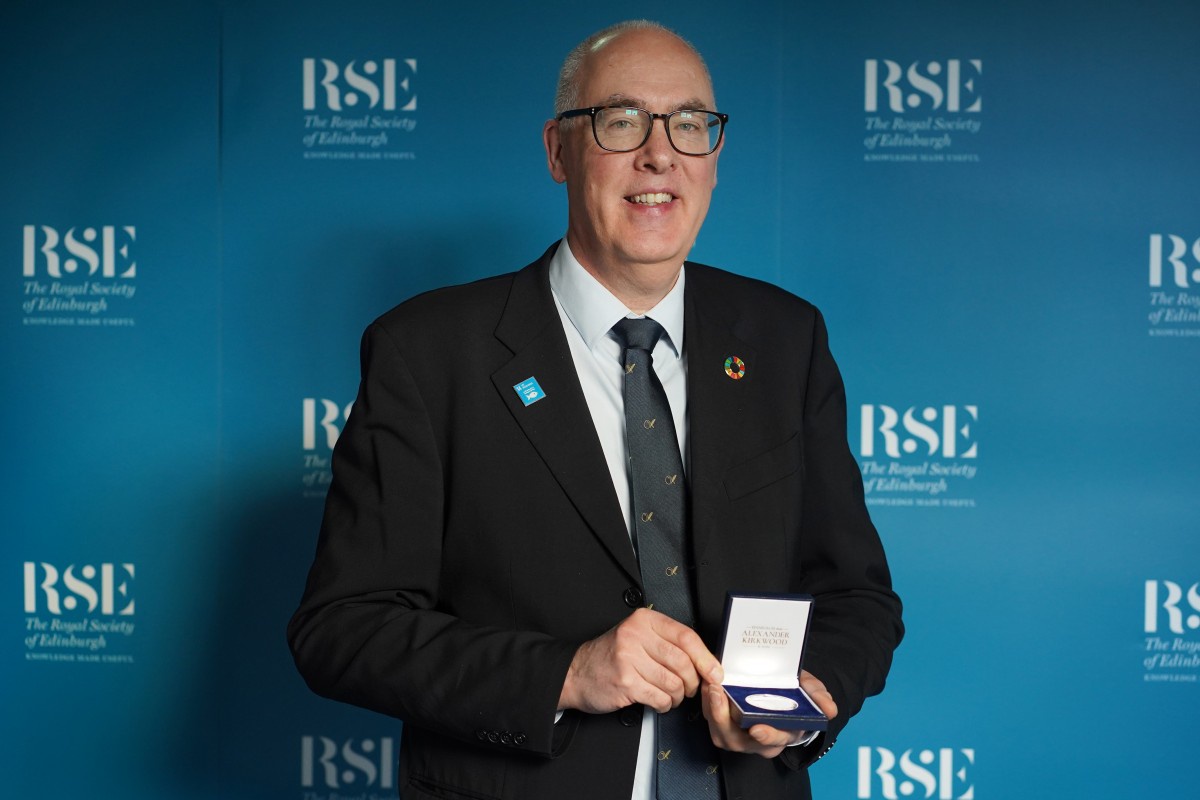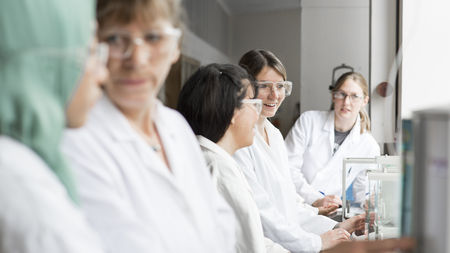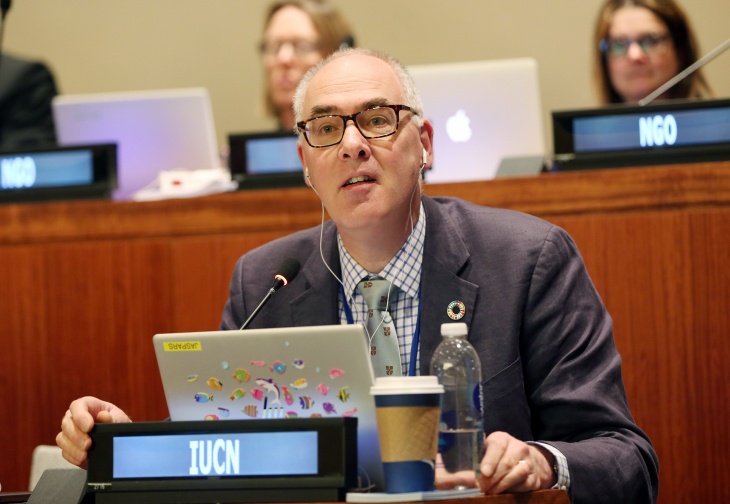
FRSE, FRSC, CChem, FHEA, BA Hons (Cantab), PhD (Dublin), ScD (Cantab)
Chair in Chemistry
- About
-
- Email Address
- m.jaspars@abdn.ac.uk
- Telephone Number
- +44 (0)1224 272895
- Office Address
Meston Building Room G21
- School/Department
- School of Natural and Computing Sciences
Biography
Previous Positions
- Head of the Department of Chemistry, University of Aberdeen 2016-2019
- Scientific Project Leader of the EU FP7 Project ‘PharmaSea’ (€ 9.5 M, 24 partners from 14 countries) 2012-2017
- Visiting Professor for Senior International Scientists of the Chinese Academy of Sciences 2012-2013
- Visiting Professor (20%) at the University of Tromsø, Norway to provide advice for their £14 M marine biodiscovery programme. 2007-2017
- Sabbatical at the Australian Institute of Marine Science, 2004
- Professor of Organic Chemistry, University of Aberdeen, 2003-
- Senior Lecturer in Organic Chemistry, University of Aberdeen, 2000-2003
- Lecturer in Organic Chemistry, University of Aberdeen, 1995-2000
- Post-Doc, Crews Lab, University of California, Santa Cruz, 1993-1995
- Post-Doc, Burgess Lab, Texas A & M University, 1992-1993
Qualifications
- BA Hons (Cantab) Natural Sciences (Chemistry)1987 - University of Cambridge
- PhD Organic Chemistry1992 - Trinity College, DublinElectrophilic Catalysis of the Sakurai Reaction
- ScD (Cantab) Organic Chemistry2018 - University of CambridgeInvestigating the Chemical Structures, Bioactivity and Biosynthesis of Marine and Desert Natural Products
- FHEA University Education2022 - Higher Education Acedemy
External Memberships
On the Scientific Advisory Board of the Center for Microbial Secondary Metabolites, Danish Technical University, Copenhagen, Denmark 2018-
Management board of NPRONET, a BBSRC network in industrial biotechnology and biosciences. 2014-2018
Governing board member of Industrial Biotechnology Innovation Centre, Strathclyde 2014-2016
Policy Work:
Contributing author to “Science in Small Island Developing States: Capacity Challenges and Options relating to Marine Genetic Resources of Areas Beyond National Jurisdiction”
Co-author of Blue Paper on the Ocean Genome for the High Level Panel for a Sustainable Ocean Economy 2020
Co-author of study for the United Nations Convention on Biological Diversity on Digital Sequence Information on Genetic Resources: Concept, Scope and Current Use. CBD/DSI/AHTEG/2020/1/3 2020
Special advisor on Marine Genetic Resources to the International Union for the Conservation of Nature at the United Nations process on the Conservation and Sustainable Use of Biodiversity of Areas Beyond National Jurisdiction. Member of the Member of the IUCN World Council on Protected Areas 2019-
Co-lead of the Deep Sea Genetic Resources Working Group of the Deep Ocean Stewardship Initiative. 2018-
Member of Royal Society working group writing a policy briefing for the Government Office of Science entitled “Future Ocean Resources: Metal-Rich Minerals and Genetics” Released July 2017.
Chair of advisory panel of policy and legal experts (Part of the PharmaSea EU FP7 consortium lead by Marcel Jaspars 2012-17) bringing together policymakers (United Nations, European Commission) with NGOs (International Union for the Conservation of Nature, Convention on Biodiversity Secretariat, International Seabed Authority) with international marine biotechnology companies and academic and legal/policy experts to shape the policy debate on intellectual property derived from marine genetic resources in areas beyond national jurisdiction (United Nations process on the Conservation and Sustainable Use of Biodiversity of Areas Beyond National Jurisdiction). Contributions recorded on our BBNJ Page and our Song of the Ocean page
UK member of the Marine Biotechnology working group of the European Science Foundation’s Marine Board Marine Biotechnology Working Group to assist in the revision of the White Paper “Marine Biotechnology – A European Strategy” 2009-2010
Prizes and Awards
Biotechnology and Biological Sciences Research Council Research Development Fellow, 2006-2009
American Society of Pharmacognosy Matt Suffness Award for young investigators, 2003
Fellow of the Royal Society of Chemistry, Chartered Chemist
Fellow of the Royal Society of Edinburgh
Fellow of the Higher Education Academy
Royal Society of Edinburgh Adam Smith Medal 2025
For his world-leading and impactful expertise in marine biodiscovery. Academically, his work in biochemistry and possible applications for drug discovery had a huge impact. He has also influenced science policy debates at the UN level on marine biodiversity in areas beyond national jurisdictions (BBNJ Treaty) and the ongoing international negotiations on digital sequence information (DSI), which is a crucial tool for equitable benefit sharing in the use of genetic resources.

- Research
-
Research Overview
Tour the lab and find out what we do
Introduction:
My research involves the discovery of new compounds with potential pharmaceutical use from marine and desert environments, their structure determination and biosynthesis. Translation of bioactive natural compounds into preclinical evaluation is exemplified by with sponge derived compounds/analogues that have activity in animal models for Alzheimer’s disease or epilepsy or are able to deliver proteins into animal brains to generate a model of Alzheimer’s disease.
Natural Product Structure Determination:
Structural work involves the use of complementary NMR and theoretical methods to solve the relative stereochemistry of complex natural products, particularly the use of NOE data to constrain conformational searches and the comparison of predicted and experimental CD spectra. A combination of analytical and spectroscopic methods was used to define a metal complex present in the extract of a seasquirt, giving insight into its ecological role.Together with Leo Gross at IBM Research, I started original work on organic structure determination using a combination of spectroscopy and atomic force microscopy (AFM). First we showed how Ångstrom-resolution AFM images may be used to solve the structure of a simple planar molecule and how this process might be generalised. Subsequently we applied the combined methods to an unknown molecule with a NMR silent region (no H atoms). In a book chapter, we propose the developments needed so that AFM may become invaluable in the rapid structure determination of complex organic molecules in the future.
Biosynthesis:
The isolation and structural characterisation of modified cyclic peptides of marine origin was driven by an interest in their chemical structure in solution and their interaction with metal ions. A major problem with these bioactive cyclic compounds was a sustainable supply. In 2004, I worked together with Dr Paul Long at the London School of Pharmacy and scientists from the Australian Institute of Marine Science to effect the first shotgun cloning of the patellamide biosynthetic pathway resulting in low level production of these compounds.Subsequent collaboration with Professor Jim Naismith at St Andrews succeeded in overexpressing and structurally characterising the main enzymes involved in the biosynthesis of the patellamides and related cyanobactins. Working together, we defined the main proteases involved including the macrocyclase that circularises a linear peptide without inclusion of a signal sequence, thus making it a very exciting prospect for biotechnological application. We have defined a unique enzyme that forms the heterocycles – the first crystal structure of this type of enzyme. Engineering of this enzyme allowed short synthetic peptide sequences to be processed to form heterocycles in the chain. These enzymes are extremely permissive, and natural and non-natural substrates can be processed using them resulting in the formation milligram quantities of complex, modified cyclic peptides. The starting sequences may include non-natural amino acids and even non-amino acid segments such as fatty acids, aromatics and sugars, with a minimum of three residues required for this to work.
Research Areas

Chemistry
Research Specialisms
- Marine Chemistry
- Medicinal Chemistry
- Organic Chemistry
- Analytical Chemistry
- Applied Chemistry
Our research specialisms are based on the Higher Education Classification of Subjects (HECoS) which is HESA open data, published under the Creative Commons Attribution 4.0 International licence.
MARBLES EU Project
Harnessing marine microbes for drug discovery and sustainable production of fish and crops
Knowledge Exchange
Policy Work:
Protecting the Oceans Using Chemistry
Professor Marcel Jaspars has been advising the UN to develop a new law to protect marine biodiversity. The UN is working to conserve and sustainably use marine biodiversity in areas beyond national jurisdiction – about 60% of the oceans and 40% of the entire planet. The Song of the Oceans brings together science, the arts and humanities to publicise the urgent need to conserve the oceans.
Policy Input
Marcel provided scientific leadership for a large EU FP7 consortium ‘PharmaSea’, running from 2012-2017 with the contribution of 24 partners from 14 countries. Part of this project was to engage with stakeholders, NGOs and policy makers to provide sound scientific advice on major issues affecting the conservation and sustainable use of marine biodiversity. His major role was to translate scientific information and provide options on this topic to senior policy makers at the EU and UN, making visits to Brussels and New York to present information in a digestible format and answer questions, paying particular attention to the legal and policy requirements.
Marcel has been active at national and international levels to develop the science, its applications/industrial uptake and associated policy involved in marine biodiscovery and biotechnology. Since 2014 Marcel has been involved in the BBNJ process, providing scientific input and co-authoring the Mare Geneticum proposal which provides building blocks based on good scientific practice towards a solution for the MGR aspects of the BBNJ process. Also see our work to bring this to a wider audience with our 'Song of the Oceans'.
At EU level he was involved in coordinating the authoring the health section of a European Science Foundation position paper on the Future of Marine Biotechnology informing the blue growth agenda of the European Commission through a number of concrete and measurable recommendations. In 2017 he was a member of the UK Marine Foresight Committee’s Royal Society Working group that wrote a report entitled ‘Future Ocean Resources: Metal-Rich Minerals and Genetics’ on the UN BBNJ issue and he has since provided advice on this topic to the UK’s Foreign and Commonwealth Office. More recently he was a co-author on a report on the Ocean Genome for the High Level Panel for a Sustainable Ocean Economy and a lead author on a study for the United Nations Convention on Biological Diversity on Digital Sequence Information on Genetic Resources: Scope, Concept and Current Use.

Marcel Jaspars speaking at UN HQ in New York as advisor to the International Union for the Conservation of Nature at the Second Intergovernmental Conference on the UN process on the Conservation and Sustainable Use of Biodiversity in Areas Beyond National Jurisdiction
Funding and Grants
Grants in the last 5 years
05/2021
EU Horizon 2020
£561 K
MARBLES Project
08/2021
IBIOIC BBSRC DTP
£102 K
Downstream processing and structure confirmation of chemoenzymatically produced macrocycles
10/2021
EASTBio BBSRC DTP
£97 K
The role of sponge competition in cold-water coral reefs – ROV video analyses and secondary metabolite profiling in the search for compounds of medical and ecological relevance
10/2021
Commonwealth Scholarship Commission
£107 K
PhD scholarship
08/2022
DEFRA
£217 K
DEEPEND project
11/2022
EU Horizon Europe
£553 K
BlueRemediomics Project
01/2023
EU Horizon Europe
£265 K
HOTBIO Doctoral Training Network
04/2023
DEFRA
£166 K
DEEPEND 2 Project
- Teaching
-
Courses
Non-course Teaching Responsibilities
Professor Jaspars is:
Year 3 Coordinator
Erasmus Officer for Chemistry
Coordinator for SX3002 'Science and Society'
- Publications
-
Page 26 of 30 Results 251 to 260 of 299
Sulfur-containing arsenical mistaken for dimethylarsinous acid (DMA(III)) and identified as a natural metabolite in urine: Major implications for studies on assenic metabolism and toxicity
Chemical Research in Toxicology, vol. 17, pp. 1086-1091Contributions to Journals: Articles- [ONLINE] DOI: https://doi.org/10.1021/tx049978q
Irreversible and reversible pore formation by polymeric alkylpyridinium salts (poly-APS) from the sponge Reniera sarai
British Journal of Pharmacology, vol. 139, no. 8, pp. 1399-1408Contributions to Journals: Articles- [ONLINE] DOI: https://doi.org/10.1038/sj.bjp.0705374
Acid-induced dimerisation of 1,2-di(thien-2-yl)ethanone
Tetrahedron, no. 59, pp. 4153-4155Contributions to Journals: Articles- [ONLINE] DOI: https://doi.org/10.1016/S0040-4020(03)00581-7
A mixed crystal of imperatorin and phellopterin, with C¾H¼O, C¾H¼p and p-p interactions
Acta Crystallographica Section C, Crystal Structure Communications, vol. C59, pp. o520-o522Contributions to Journals: ArticlesA mixed crystal of imperatorin and phellopterin, with C-H center dot center dot center dot O, C-H center dot center dot center dot pi and pi-pi interactions
Acta Crystallographica Section C, Crystal Structure Communications, vol. 59Contributions to Journals: Articles- [ONLINE] DOI: https://doi.org/10.1107/S0108270103012459
An anomalous racemate of naringenin at 120 K
Acta Crystallographica Section E: Structure Reports Online, vol. E59, pp. o46-o48Contributions to Journals: ArticlesBioactive flavonoid glycosides from the seeds of Rosa canina
Pharmaceutical Biology, vol. 41, pp. 237-242Contributions to Journals: Articles- [ONLINE] DOI: https://doi.org/10.1076/phbi.41.4.237.15663
Bioactivity of secoiridoid glycosides from Centaurium erythraea
Phytomedicine, vol. 10, pp. 344-347Contributions to Journals: Articles- [ONLINE] DOI: https://doi.org/10.1078/094471103322004857
Biological activity of Euonymous eoropaeus
Fitoterapia, vol. 74, pp. 305-307Contributions to Journals: Articles- [ONLINE] DOI: https://doi.org/10.1016/S0367-326X(03)00022-4
Biological Activity of Lignans from the Seeds of Centaurea scabiosa
Pharmaceutical Biology, vol. 41, no. 3, pp. 203-206Contributions to Journals: Articles- [ONLINE] DOI: https://doi.org/10.1076/phbi.41.3.203.15099
